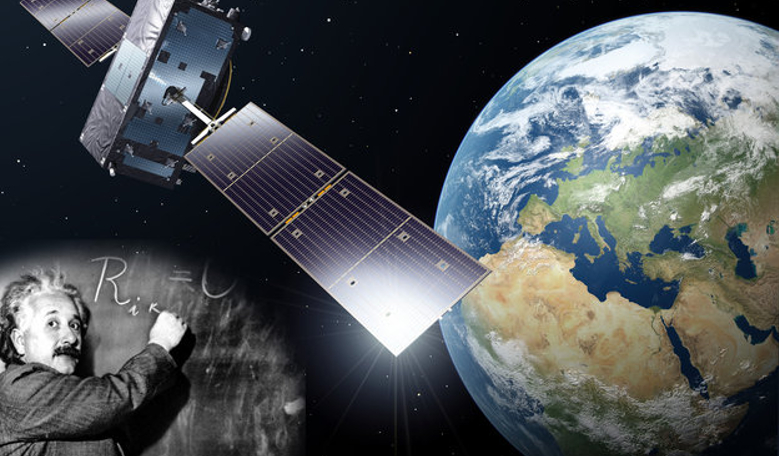A pair of Europe’s Galileo satellites that have fortuitously been stranded in an incorrect orbit for a few years, have helped scientists achieve the most accurate measurement ever made of gravitational redshift; a key element of Einstein’s Theory of General Relativity, that describes how time passes more slowly when close to a massive object.
Einstein theorised that shifts in gravity would alter the passing of time a century ago and since then, several experiments have proved this to be the case. However these new findings improve upon the measurement fivefold.
These extraordinary results have been made possible thanks to the very high stabilities of passive hydrogen maser (PHM) clocks aboard each Galileo. These particular ones are stable to one second in three million years and if they didn't account for gravitational redshift, i.e that they run faster in orbit than they do down on the ground, then it would only take a mistiming of a few tenths of a microsecond per day for the satellites to be off course by around 10 kilometres per day, if they were left uncorrected.
“The fact that the Galileo satellites carry passive hydrogen maser clocks, was essential for the attainable accuracy of these tests,” said Sven Hermann at the University of Bremen’s ZARM Center of Applied Space Technology and Microgravity.
“It is hugely satisfying for ESA to see that our original expectation that such results might be theoretically possible have now been borne out in practical terms, providing the first reported improvement of the gravitational redshift test for more than 40 years,” comments Javier Ventura-Traveset, Head of ESA’s Galileo Navigation Science Office.
The discovery is all the more gratifying, as the measurement only came about because the two Galileo satellites (5 and 6) were not where they were supposed to be. Launched back in 2014, a malfunctioning Soyuz upper stage rocket stranded the satellites in orbits that were too elliptical to be used for their intended purpose - navigation.
Despite an attempt by ESA flight controllers to raise the low points of the satellites’ orbits and make them more circular, they could not shift them enough and instead each satellite climbed and fell some 8500 kilometres twice per day.
But rather than assign the satellites to the great scrapheap in the skies, these regular shifts in height, and therefore regular shifts in gravity levels, turned a misfortunate event into a fortunate one.
“The fact that the Galileo satellites carry passive hydrogen maser clocks, was essential for the attainable accuracy of these tests,” noted Sven Hermann at the University of Bremen’s ZARM Center of Applied Space Technology and Microgravity. “Ongoing improvements in the processing and in particular in the modelling of the clocks, might lead to tightened results in the future.”
When the satellites are not helping to prove that Einstein was right once again, they are used as part of the Galileo search and rescue services, but the aim is still to use them for the purpose they were designed for. Once approved by ESA and the European Commission, the satellites will take their place with the other 24 active Galileo satellites, a system which cost around 9 billion euros to implement, to resume normal operations.











